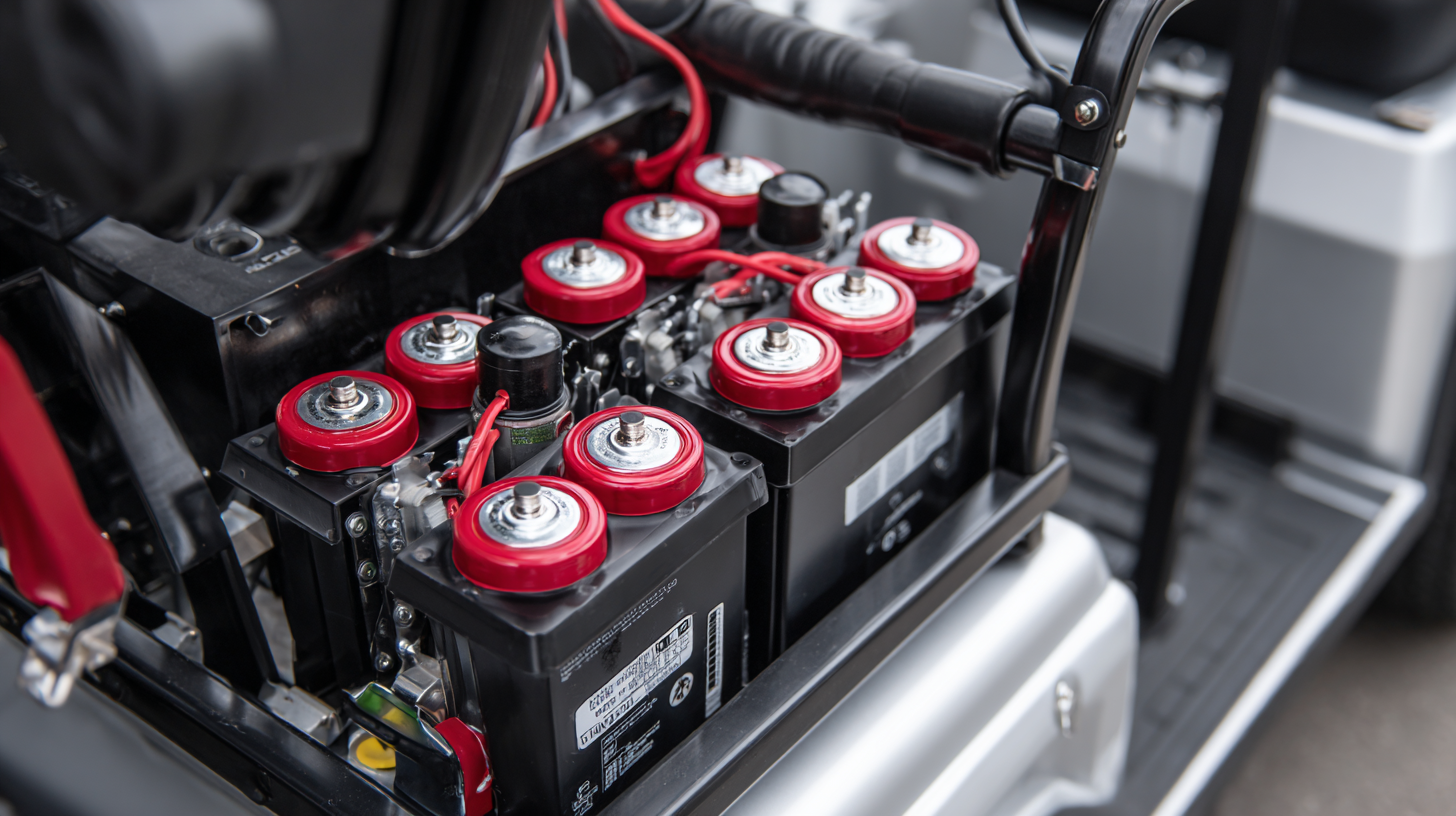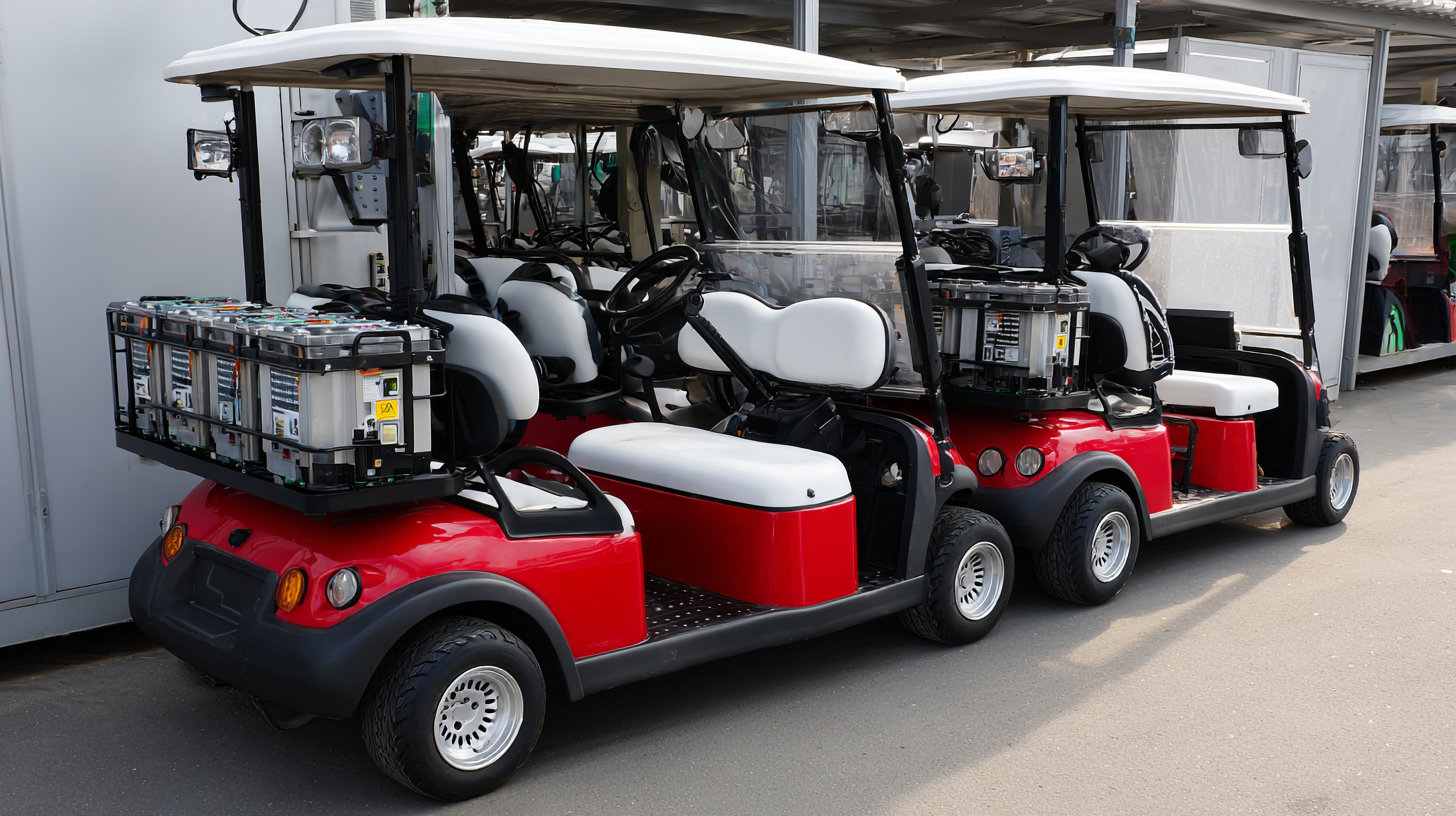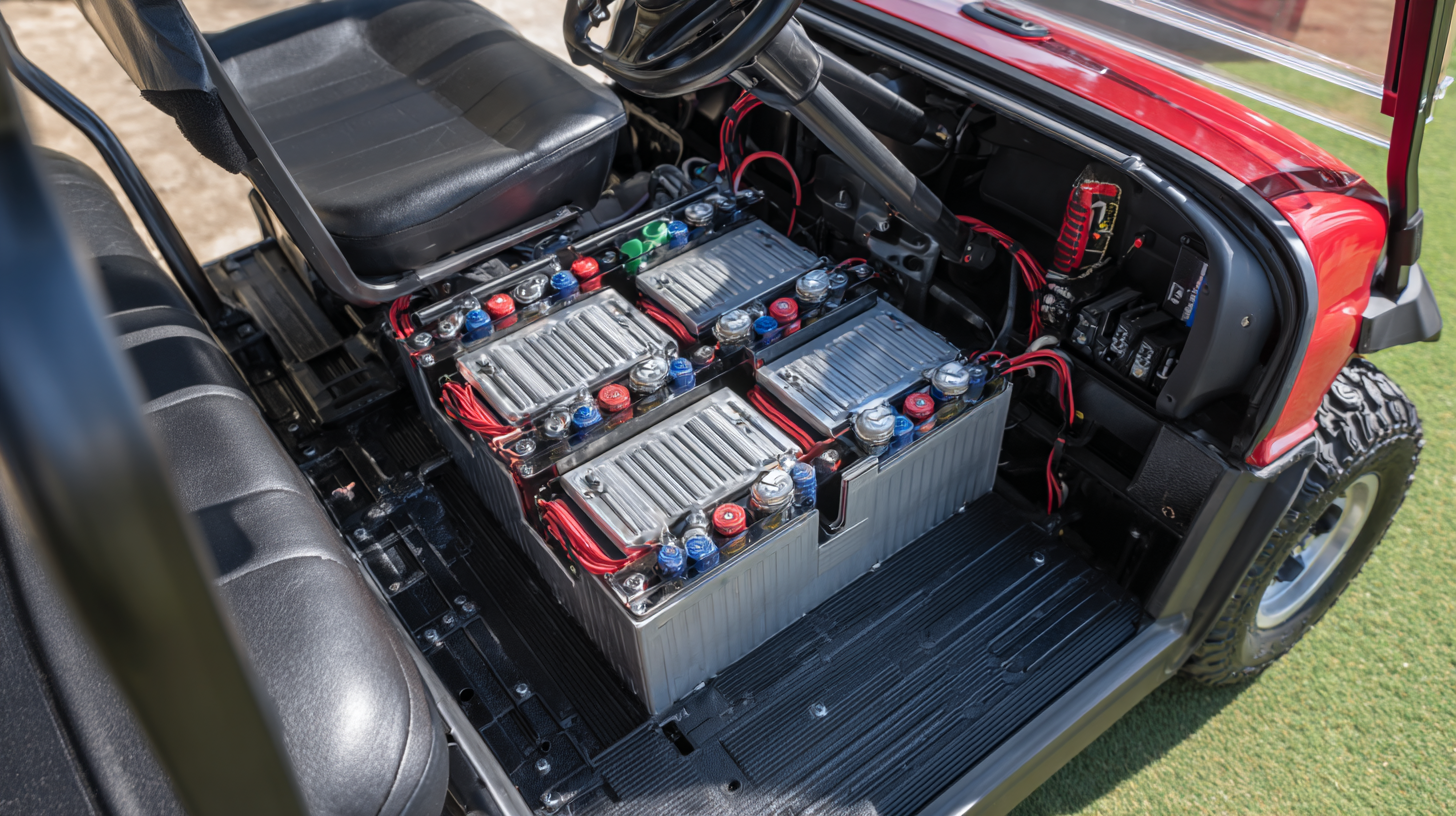Factory Tour
Unleashing Performance: Best Practices for 48V Golf Cart Battery Pack Optimization
In the evolving landscape of electric vehicles, the 48V Golf Cart Battery Pack stands out as a critical component that drives performance and efficiency. As the demand for sustainable and reliable power solutions continues to rise, optimizing battery packs has become a paramount concern for manufacturers and enthusiasts alike. This blog will explore cutting-edge practices and innovations that can enhance the capabilities of 48V Golf Cart Battery Packs, ensuring they deliver maximum power, longevity, and reliability. By delving into the latest advancements in battery management systems, charging techniques, and materials, we aim to provide readers with actionable insights to unleash the full potential of their golf cart's power system. Join us as we navigate through best practices that promise to elevate the performance of your 48V Golf Cart Battery Pack to new heights.

Identifying the Key Components of 48V Golf Cart Battery Packs
When optimizing 48V golf cart battery packs, understanding the key components is essential for enhancing performance and longevity. The battery chemistry, often lithium-ion or lead-acid, plays a significant role in determining the pack's efficiency. According to a report by the International Council on Clean Transportation, lithium-ion batteries typically offer better energy density and lifespan compared to lead-acid counterparts, making them increasingly popular for golf carts. With proper management, a lithium-ion pack can deliver up to 3,000 discharge cycles, significantly outpacing traditional batteries.
Tip: When selecting a battery type, consider the usage intensity of your golf cart. For frequent use, a lithium-ion battery might be the more economical choice in the long run.
Another critical aspect is the battery management system (BMS), which safeguards against overcharging, deep discharging, and short circuits. A well-designed BMS can improve battery performance and monitor health in real-time, prolonging the lifespan of the battery pack. The U.S. Department of Energy states that an optimized BMS can enhance energy efficiency by as much as 30%.
Tip: Regularly check and maintain your BMS to ensure it effectively protects the battery and maximizes its potential. This proactive approach minimizes maintenance costs and boosts overall performance.

Assessing Optimal Battery Management Systems for Enhanced Performance
The global Battery Management System (BMS) market is set to witness significant growth in the coming years, with projections indicating an increase from USD 11.42 billion in 2024 to USD 46.94 billion by 2032, achieving a remarkable compound annual growth rate (CAGR) of 19.32%. This growth can be attributed to the rising demand for electric vehicles (EVs) and the necessity for advanced battery technologies that ensure safety, efficiency, and longevity. Innovative solutions in battery management are crucial as they directly impact the performance metrics of electric vehicles, including driving range and energy efficiency.
Recent advancements in smart battery technologies, such as the introduction of intelligent battery cells that feature independent management and wireless communication capabilities, are pivotal in enhancing the overall functionality of BMS. These innovations aim to address pertinent challenges related to battery safety and performance optimization, which are essential for the adoption of electric vehicles. Moreover, integrating artificial intelligence into battery management can further improve the effectiveness of energy usage and lifespan, solidifying the critical role of BMS in contemporary electric mobility. As the industry continues to evolve, the focus on optimized battery management systems will be a key area for stakeholders aiming to maximize performance and ensure sustainable growth.
Unleashing Performance: Best Practices for 48V Golf Cart Battery Pack Optimization
| Parameter | Optimal Value | Measurement Unit | Notes |
|---|---|---|---|
| Nominal Voltage | 48 | V | Standard operational voltage |
| Capacity | 200 | Ah | Capacity for longer driving range |
| Charging Voltage | 54.6 | V | Recommended charging voltage |
| Discharge Current | 100 | A | Safe discharge rate for performance |
| Battery Management System (BMS) Type | Smart BMS | - | Enhances monitoring and balance |
| Cycle Life | 1500 | Cycles | Expected number of charge cycles |
| Temperature Range | -20 to 60 | °C | Optimal operating temperature |
Implementing Regular Maintenance Routines for Longevity
Implementing regular maintenance routines is essential for extending the lifespan of 48V golf cart battery packs. A study by the National Renewable Energy Laboratory reveals that proper maintenance can enhance battery life by up to 30%. This is particularly crucial for golf carts, which rely on consistent performance for an optimal golfing experience. Key maintenance practices include:
- Regularly checking battery fluid levels,
- Cleaning terminals to prevent corrosion,
- Ensuring that connections are tight and secure.
These simple tasks can significantly impact battery efficiency and longevity.
Additionally, monitoring the charging cycles is vital. According to the American Society of Golf Course Architects, charging a golf cart battery too frequently or letting it discharge completely can lead to reduced capacity. It is recommended to charge batteries after every use, aiming for a depth of discharge (DOD) of no more than 50%. By adhering to these guidelines, golf cart owners can maximize their battery packs’ performance while minimizing the risk of premature failure, ultimately leading to better reliability on the course.
Regular maintenance not only preserves battery health but also contributes to a more sustainable and eco-friendly approach to golf cart operations.
Utilizing Smart Charging Techniques to Maximize Efficiency
 Smart charging techniques are crucial for optimizing the performance of 48V golf cart battery packs. These advanced methods not only enhance the charging efficiency but also extend the longevity of the batteries. Implementing techniques such as pulse charging can help reduce heat buildup, which is often a significant factor in battery wear. By allowing the battery to cool between pulses, the life cycle is extended while maintaining a higher state of charge. Regular monitoring of battery voltage and temperature during the charging process ensures that the batteries operate within their optimal ranges, minimizing the risk of overcharging.
Smart charging techniques are crucial for optimizing the performance of 48V golf cart battery packs. These advanced methods not only enhance the charging efficiency but also extend the longevity of the batteries. Implementing techniques such as pulse charging can help reduce heat buildup, which is often a significant factor in battery wear. By allowing the battery to cool between pulses, the life cycle is extended while maintaining a higher state of charge. Regular monitoring of battery voltage and temperature during the charging process ensures that the batteries operate within their optimal ranges, minimizing the risk of overcharging.
Moreover, integrating smart charging systems that communicate with the battery management system (BMS) can provide real-time data and insights. This enables users to adjust their charging strategies based on specific usage patterns and environmental conditions. For example, during periods of high demand, the system can prioritize rapid charging while ensuring battery health is not compromised.
Ultimately, utilizing these smart charging techniques facilitates not only better performance and efficiency for 48V golf carts but also promotes sustainability by maximizing the use of each battery cycle.
Evaluating Upgrade Options for Increased Power and Range
When considering upgrades for 48V golf cart battery packs, it's essential to focus on enhancing power output and extending range. Recent industry reports indicate that by upgrading to lithium-ion batteries, users can experience a 50% increase in energy density compared to traditional lead-acid options. This transition not only boosts performance but also reduces weight, allowing for improved handling and increased speed on the course.
Tip: Evaluate your current battery’s cycle life. A lithium-ion battery typically offers over 2,000 cycles, while lead-acid batteries may only last around 500 cycles. Investing in a longer-lasting battery can save money in the long run while ensuring your golf cart remains reliable.
Another key aspect to consider is the compatibility of the upgraded battery with your existing electrical system. A well-matched battery management system (BMS) can optimize charging and discharging processes, ensuring maximum efficiency. Industry findings suggest that an optimized BMS can increase a battery’s lifespan by up to 30%, making this a crucial factor in your upgrade strategy.
Tip: Always check the pinch voltage requirement of your golf cart when selecting a new battery. Ensuring that your new system meets or exceeds your cart's specifications can prevent performance issues and enhance your overall experience on the course.
Golf Cart Battery Pack Performance Optimization
This chart illustrates the performance metrics of various golf cart battery pack options. The first dataset represents the power output in kilowatts, while the second dataset showcases the range in miles. By evaluating these options, users can identify potential upgrades for enhancing performance and extending travel distance.






